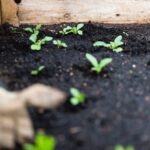Are you looking to create a sustainable and eco-friendly garden that is not only beautiful but also functional? In this article, we will explore the concept of permaculture garden design, focusing on the layout and planning of your outdoor space. From understanding the principles of permaculture to choosing the right plants and incorporating hardscapes, we will cover everything you need to know to create a thriving and sustainable garden.
Permaculture garden design is all about creating a harmonious and self-sustaining ecosystem within your outdoor space. By carefully considering factors such as sunlight, soil quality, and water availability, you can create a garden that not only looks great but also supports local biodiversity and provides food for both humans and wildlife. In this article, we will delve into the principles of permaculture and how they can be applied to your garden layout.
One of the first steps in designing a permaculture garden is assessing your space. Understanding the unique characteristics of your garden – from its microclimates to its topography – will allow you to create functional zones and sectors that optimize both productivity and beauty. By considering these factors in your layout, you can maximize the potential of your garden while minimizing maintenance requirements. Stay tuned as we explore these concepts in more detail throughout this article.
The Principles of Permaculture
Permaculture design is guided by a set of principles that help create sustainable and productive ecosystems. The principles of permaculture are based on the idea of working with nature, rather than against it, to develop harmonious and self-sustaining systems. By understanding these principles, gardeners can create designs that not only provide for human needs but also benefit the environment.
One of the key principles of permaculture design is observation. This involves taking the time to carefully study and understand the natural patterns and processes at work in a particular space. By observing factors such as sunlight, wind patterns, water flow, and soil composition, gardeners can make informed decisions about how to best utilize their space and resources.
Another important principle is zone and sector planning. This involves dividing the garden into different zones based on how frequently activities or maintenance will occur in each area. Zones are typically arranged in a series of concentric circles, with those requiring the most attention located closest to the home or main activity area.
Sectors, on the other hand, consider external influences such as prevailing winds, noise pollution, or wildlife movement that may impact the garden design. Understanding these factors allows designers to place elements strategically to maximize efficiency and productivity.
Assessing Your Space
When designing a permaculture garden, it is essential to assess your space thoroughly to make the most of its natural elements. Understanding the sunlight, soil, and water available in your garden will help you make informed decisions about plant selection and garden layout. Here are some key points to consider when assessing your space:
1. Sunlight: Take note of the areas in your garden that receive full sun, partial sun, and shade throughout the day. This will help you determine which plants will thrive in each area and plan accordingly for shade-providing structures or trees.
2. Soil: Conduct a soil test to determine its pH level, nutrient content, and texture. This information will guide you in choosing the right plants for your soil type and implementing any necessary amendments for optimal plant growth.
3. Water: Assess the natural water flow in your garden, including any low-lying areas prone to pooling or areas that are particularly dry. Consider incorporating rainwater harvesting systems or swales to optimize water usage and drainage in your garden design.
By understanding these fundamental aspects of your garden space, you can create a permaculture design that maximizes the natural resources available while minimizing environmental impact. Taking these factors into account from the beginning will set the foundation for a thriving, sustainable garden ecosystem.
Functional Design
When designing a permaculture garden, creating zones and sectors is a crucial step in maximizing efficiency and productivity. By dividing your garden into different zones based on the frequency of use and the specific needs of the plants, you can create a functional design that promotes sustainability and ease of maintenance. Here are some tips for creating zones in your permaculture garden:
1. Zone 0: This is the center of activity in your garden, typically including your home and any other structures such as a greenhouse or toolshed. It should be easily accessible from all other zones and serve as the hub of garden activity.
2. Zone 1: This zone is closest to Zone 0 and typically contains the most intensively used plants, such as herbs, vegetables, and other crops that require frequent attention. It should be located near a water source for easy irrigation.
3. Zone 2: As you move further away from Zone 0, this zone contains less intensive food production such as fruit trees, small livestock, or areas for composting. It requires less frequent attention than Zone 1 but should still be easily accessible.
In addition to creating different zones, understanding sectors is also important in permaculture garden design. Sectors are external elements such as sun exposure, wind patterns, or neighboring properties that can affect the layout and productivity of your garden. By identifying these sectors and incorporating them into your design, you can optimize the placement of plants and structures to work with these natural elements rather than against them.
By carefully considering the creation of zones and sectors in your permaculture garden design, you can create an efficient and harmonious layout that maximizes productivity while minimizing maintenance efforts.
Choosing the Right Plants for Your Permaculture Garden
When it comes to permaculture garden design, choosing the right plants is crucial to ensure a sustainable and thriving ecosystem. The selection of plants should be based on their ability to complement each other, provide multiple functions, and contribute to the overall health of the garden. In permaculture, this is known as “guild planting,” where certain plants support each other through their various attributes such as nutrient accumulation, shade provision, pest deterrence, and more.
One important principle in choosing plants for a permaculture garden is to prioritize native and perennial species. Native plants are well-suited to the local climate and soil conditions, requiring minimal maintenance and resources once established. Perennial plants also offer long-term benefits by reducing the need for replanting each season and providing continuous yields year after year.
In addition to native and perennial species, diversity in plant selection is key to creating a resilient and balanced ecosystem. This includes incorporating a variety of trees, shrubs, herbs, flowers, fruits, and vegetables that can collectively support each other’s growth while attracting beneficial insects and wildlife. When selecting plants for your permaculture garden, it’s essential to consider their contributions to soil fertility, water conservation, pest management, food production, and overall ecological harmony.
| Plant Selection Principles | Key Considerations |
|---|---|
| Native Species | Well-adapted to local climate and soil conditions |
| Perennial Plants | Offer long-term benefits with minimal maintenance |
| Diversity | Create a resilient ecosystem with varied plant types |
Implementing Sustainable and Eco-Friendly Garden Layouts
When it comes to creating a permaculture garden design, sustainability and eco-friendliness are key components. One way to achieve this is by using recycled or repurposed materials for hardscapes and structures within your garden. For example, using reclaimed wood for raised beds or pathways not only reduces waste but also adds a unique and rustic charm to your garden. Additionally, incorporating natural materials such as stone or gravel can help minimize the environmental impact of your garden layout.
Another important aspect of sustainable garden layouts is water conservation. Consider installing rainwater harvesting systems to collect and store rainwater for irrigation purposes. This not only reduces the demand on traditional water sources but also helps to conserve this precious resource. Furthermore, integrating drought-resistant plants into your garden design can help reduce the need for excessive watering while still maintaining a vibrant and healthy garden space.
In addition to materials and water conservation, eco-friendly gardening also involves attracting beneficial wildlife to your garden. This can be achieved by incorporating native plants that provide food and habitat for local pollinators and other beneficial insects. Creating a biodiverse ecosystem in your garden not only supports the local environment but also helps maintain the balance of nature within your own outdoor space.
| Aspect | Recommendation |
|---|---|
| Materials | Use recycled or repurposed materials such as reclaimed wood or natural stone for hardscapes |
| Water Conservation | Install rainwater harvesting systems and incorporate drought-resistant plants |
| Wildlife Habitat | Incorporate native plants to attract beneficial wildlife such as pollinators and insects |
Incorporating Hardscapes and Structures Into Your Garden Design
Introduction to Hardscapes and Structures
Incorporating hardscapes and structures into your permaculture garden design is an essential aspect of creating a functional and aesthetically pleasing outdoor space. Hardscapes refer to the non-living elements of the landscape, such as pathways, patios, walls, and fences, while structures can include pergolas, trellises, and greenhouses. These features not only add visual interest to the garden but also serve practical purposes in terms of organization and resource management.
Functional Integration With Nature
When incorporating hardscapes and structures into your garden design, it is important to consider how these elements can integrate with the natural environment. Utilizing locally sourced materials for building features such as walls or using permeable materials for pathways can minimize the impact on the surrounding ecosystem. Additionally, strategic placement of structures can provide shade, wind protection, and habitat for beneficial wildlife.
Creative Design Ideas
There are numerous creative ways to incorporate hardscapes and structures into your permaculture garden design. For example, utilizing recycled materials to build raised beds or constructing a rainwater harvesting system integrated with a pergola can align with permaculture principles of sustainability and resourcefulness.
Incorporating artistic elements such as mosaics or sculptures made from reclaimed materials can also add unique character to your garden while promoting eco-friendly practices. By considering both functionality and creativity in your design approach, you can create a truly harmonious space that enhances both the natural environment and human experience.
Maintenance and Care
Regular Maintenance Practices
Keeping a permaculture garden thriving requires regular maintenance practices to ensure the health and productivity of the plants. This includes tasks such as watering, weeding, mulching, and pruning. Watering should be done deeply but infrequently to encourage deep root growth, while mulching helps retain moisture and suppress weeds. Regular weeding is necessary to prevent competition for resources among plants, and pruning helps maintain plant health and shape.
Soil Health Management
Maintaining the health of the soil is crucial for the success of a permaculture garden. Implementing practices such as crop rotation, composting, and cover cropping can help improve soil fertility and structure. Crop rotation prevents depletion of specific nutrients in the soil by alternating plant families in different areas of the garden. Composting organic materials adds essential nutrients back into the soil, while cover cropping helps prevent erosion and improves soil quality.
Integrated Pest Management
In order to keep a permaculture garden thriving, it’s important to practice integrated pest management (IPM) techniques to control pests in an environmentally responsible manner. This may include introducing beneficial insects, practicing companion planting, using physical barriers, or employing organic pesticides when necessary. By promoting a balanced ecosystem within your garden, you can minimize pest problems while maintaining a healthy environment for your plants to thrive.
By following these maintenance and care guidelines, you can ensure that your permaculture garden continues to flourish over time while staying true to its sustainable and eco-friendly principles.
Conclusion
In conclusion, permaculture garden design offers a variety of benefits that not only contribute to a sustainable and eco-friendly lifestyle but also create a beautiful and functional outdoor space. By following the principles of permaculture and understanding the needs of your space in terms of sunlight, soil, and water, you can create a garden that is not only visually appealing but also productive and diverse.
One of the main advantages of permaculture garden design is its ability to mimic natural ecosystems, encouraging biodiversity and resilience. By incorporating zones and sectors into your garden layout, you can create a more efficient and productive system that requires less maintenance and input over time. Additionally, choosing the right plants for your permaculture garden can further enhance its beauty while providing food, habitat for wildlife, and other ecosystem services.
Furthermore, the implementation of sustainable and eco-friendly garden layouts, as well as the incorporation of hardscapes and structures such as rainwater catchment systems or composting areas, can help reduce waste, conserve resources, and minimize environmental impact. Overall, embracing permaculture garden design not only benefits the environment but also enriches our lives by providing a space for connection with nature, relaxation, and abundance.
Frequently Asked Questions
How Do I Organize My Permaculture Garden?
Organizing a permaculture garden involves creating a design that mimics the patterns and resilience of natural ecosystems. This includes grouping plants with similar needs together, using companion planting techniques, and incorporating elements like water catchment systems and mulch to promote sustainability. The key is to integrate different elements in a way that maximizes efficiency and reduces waste.
How Do You Set Up a Permaculture Garden?
Setting up a permaculture garden involves careful planning and assessment of the site’s conditions, such as sun exposure, soil quality, and water availability. Once these factors are considered, the next step is to design the layout of the garden to include various components like vegetable beds, fruit trees, herbs, and other perennial plants.
Implementing sustainable practices like rainwater harvesting and composting also play a crucial role in establishing a successful permaculture garden.
What Is the Most Effective Garden Layout?
There isn’t one universal most effective garden layout for permaculture, as it depends on factors such as climate, available space, and desired yield. However, many permaculture designs follow principles such as creating polycultures (growing multiple plant species together), using vertical space efficiently through trellises or stacked planting arrangements, and integrating functional elements like pathways and seating areas into the garden layout.
Ultimately, an effective permaculture garden layout is one that maximizes diversity while minimizing maintenance needs.

Welcome to my gardening blog! I am passionate about plants and enjoy sharing my knowledge and experiences with others. In this blog, I will write about everything related to gardening, from tips on how to get started to updates on my own garden projects.





